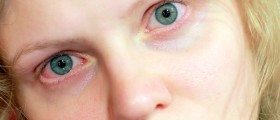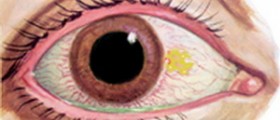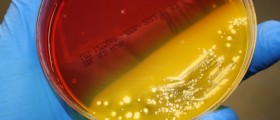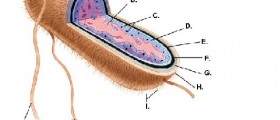
Conjunctivitis is the inflammation of the conjunctiva, the outermost layer of the eye and the inner surface of the eyelids. This condition is also known under the names pink eye or madras eye. Conjunctivitis is usually caused by an infection. In most of the cases viruses cause the infection of the conjunctive, but sometimes bacteria is to blame. Bacterial conjunctivitis starts as a microbial infection when different bacterial strains invade the surface tissues of the eye. The most common species of bacteria associated with bacterial conjunctivitis are streptococci, staphylococci, and Corynebacterium strains. The condition is usually benign but extremely unpleasant. However, bacterial conjunctivitis may sometimes point out to more severe underlying diseases.
Pathophysiology of bacterial conjunctivitis
Like the rest of the human body, various bacteria also colonize the eye. The healthy immune system keeps this diversity of microorganisms in a perfect balance. However, under the certain circumstances, the host’s defense can severely change, and the bacteria may start to spread uncontrollably. This process finally ends up in clinical infection. Sometimes, the changes in the ocular flora may occur because of the various external contaminations. For example, the patient may touch the eye with dirty hands and transfer the microorganisms on the surface of the eye. In some other cases, the defense system of the eye may become compromised after an injury, creating the sufficient conditions for bacterial overgrowth.
In some rare cases, bacterial infection of the conjunctiva can be spread from adjacent sites. In most severe cases, bacteria may reach the eye through the blood. This occurs in sepsis, which is an extremely severe illness in which bacteria overwhelm the bloodstream.
Symptoms of bacterial conjunctivitis
Conjunctivitis is typically characterized by the redness of the eye, irritation and excessive watering. Typically, only one eye is affected, but the infection may easily spread to both eyes. The vision and the pupil activity usually remain unchanged. Bacterial conjunctivitis usually manifests in irritation and a stringy, opaque, grayish or yellowish discharge. The eyelids may often stick together, especially after sleep. Crusting of the eye and the surrounding skin may commonly appear. Patients will often feel as if they have a foreign body in the eye.
Treatment for bacterial conjunctivitis
In more than half of the cases, bacterial conjunctivitis will clear by itself in a couple of days. Doctors may prescribe antibiotics, various eye drops or ointments if the condition does not improve in three days. Patient is often advised to avoid sharing towels and linens, maintain a proper hygiene and avoid public swimming pools. Workers and students are typically excused during the first several days of treatment.

















Your thoughts on this
Loading...